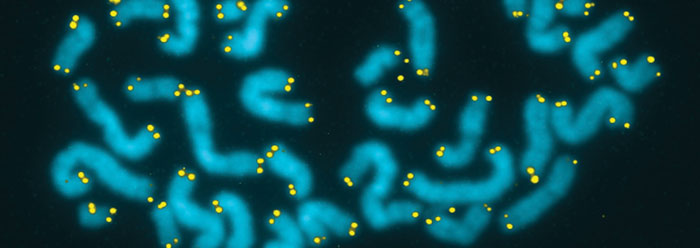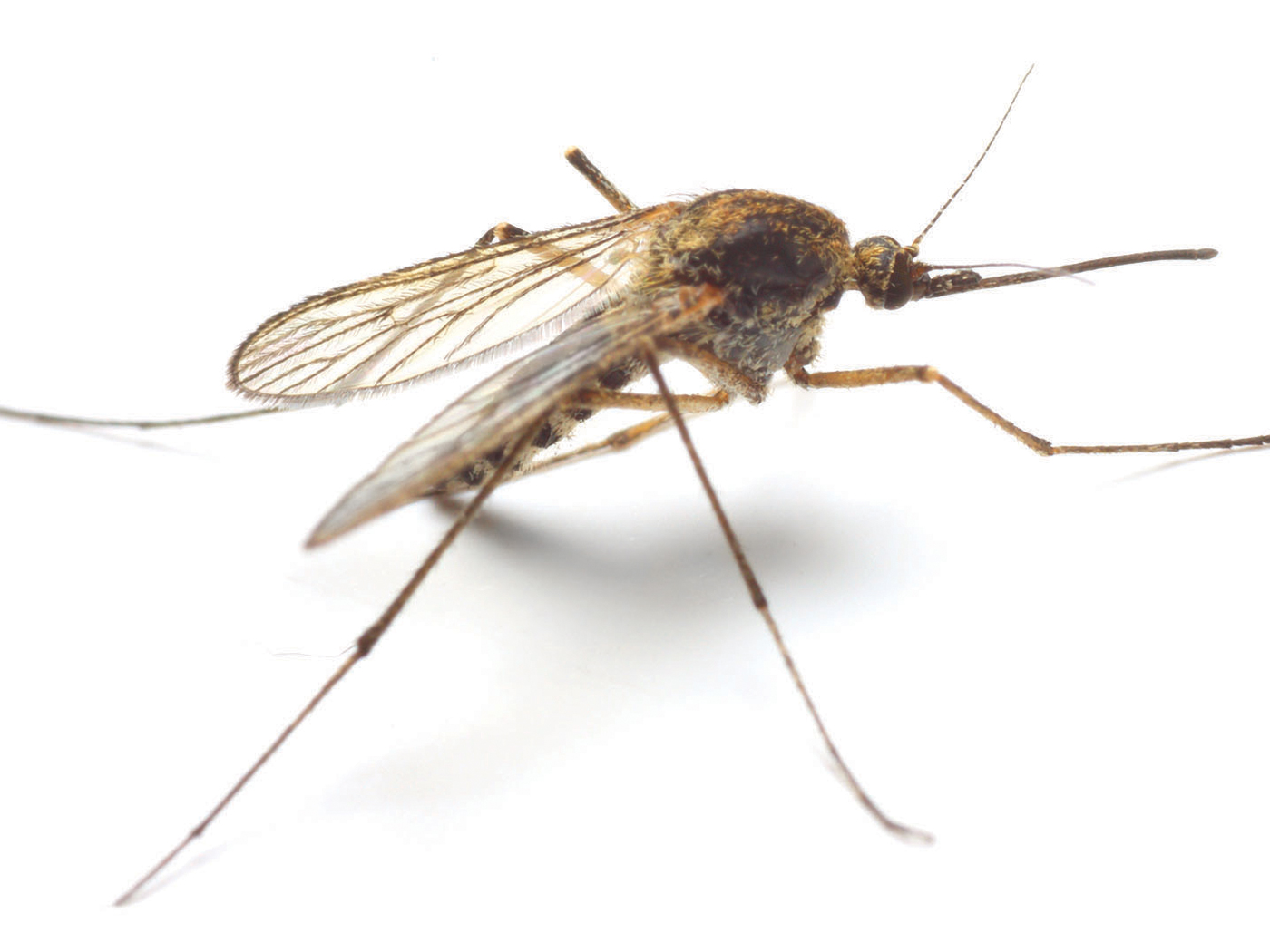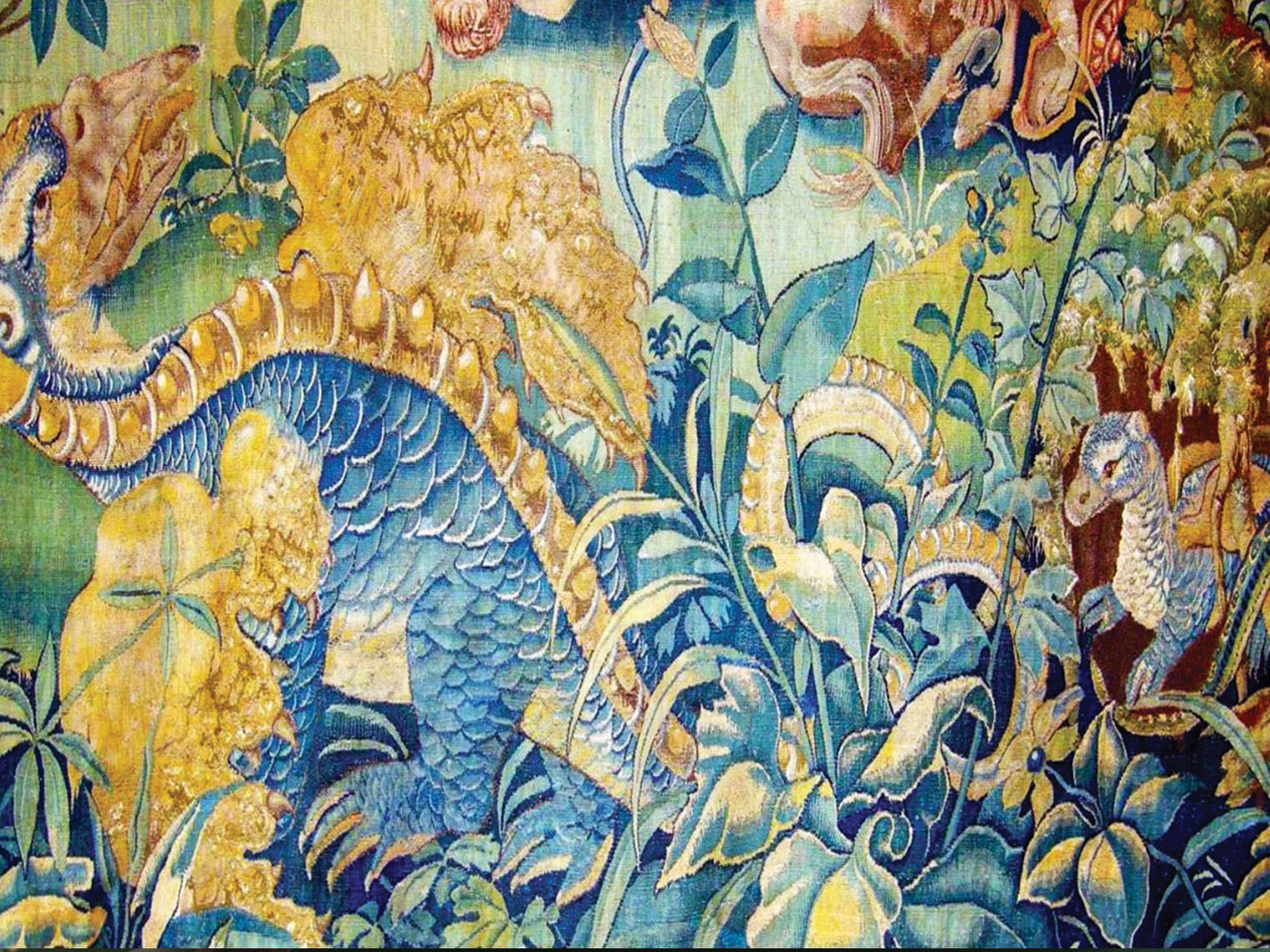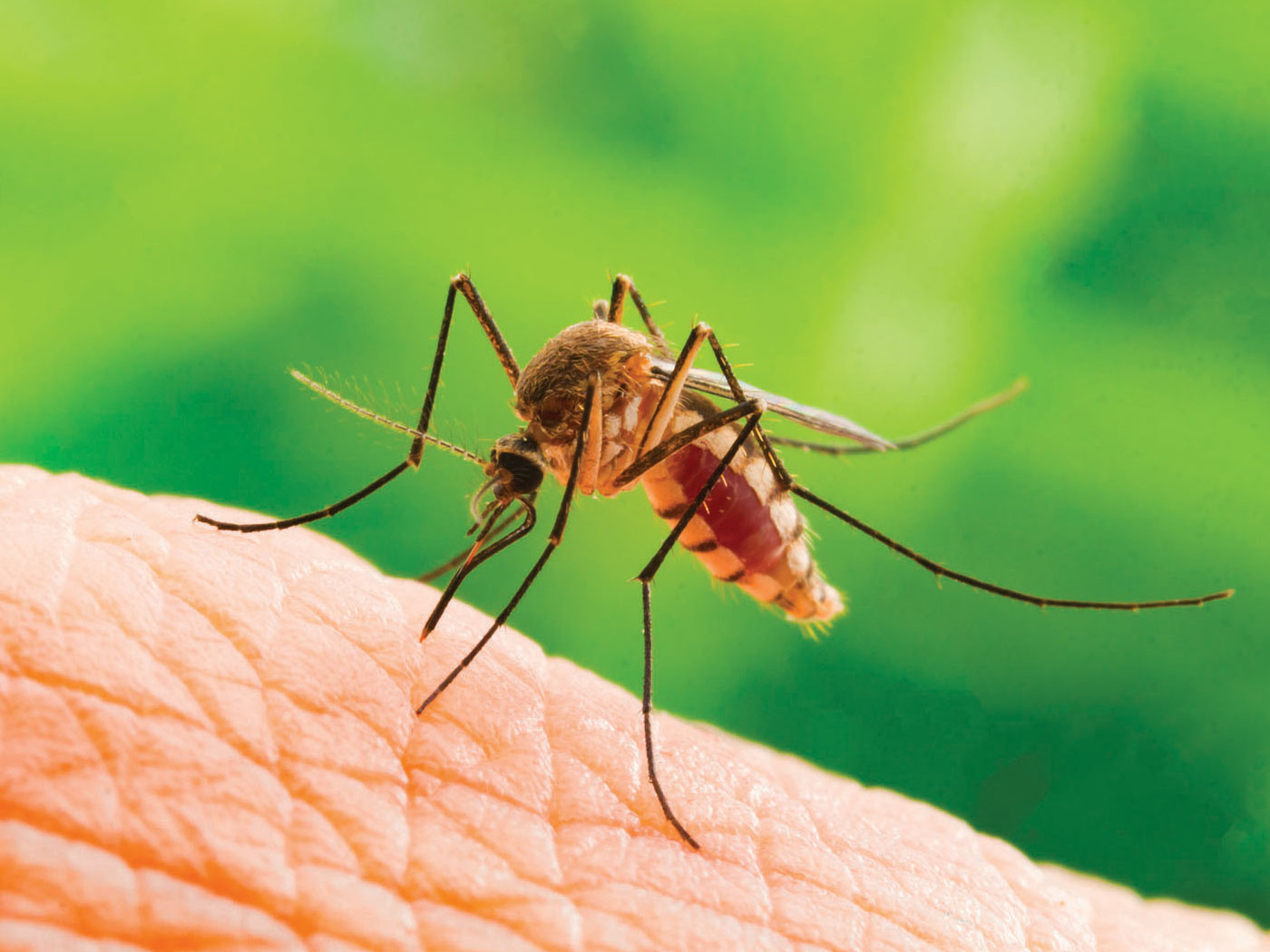Life sciences research at ICR has recently been focused on the cell’s telomere system. As described in earlier articles, the chromosome end-capping (telomere) system found in the cells of plants and animals contains features that protect the ends of linear chromosomes.1, 2 The telomere is a uniquely designed mechanism that makes higher forms of cell life possible, in contrast to single-cell bacteria that have simpler, circular chromosomes.
Telomeres are actually very complex structures involving RNA, DNA, and proteins that have both structural and dynamic regulatory features. The basic chromosomal DNA sequence of the telomere is a very long string of 6-base units that are repeated in tandem and can extend up to 5,000 to 15,000 bases in length.2
A cluster of these telomere sequences in the middle of human chromosome 2 has, in part, led evolutionists to postulate that it was produced by the fusion of two smaller ape-like chromosomes. This is thought to explain the discrepancy in chromosome numbers between human and most ape genomes. This fusion paradigm or model involves several genetic issues. In previous research columns and in two Journal of Creation publications, it is shown that the genetic data surrounding the fusion model are highly ambiguous and problematic.3-6
Nevertheless, one of the main questions that arose during ICR’s fusion site research was the possibility of telomere repeats within many internal regions of human chromosomes. The genome-wide presence of internal telomere sequences is not well documented in the scientific literature. In our research, it became evident that telomere repeats were not unique to the ends of chromosomes. Therefore, this author developed software that enables the scanning of whole chromosomes for internal telomere content. Fully assembled human chromosome sequence was downloaded from the public DNA repository at the National Center for Biotechnology. Prior to scanning, the ends of each chromosome were manually trimmed to remove telomeres at the termini, including telomere-dense areas in adjacent sub-telomeres.
Surprisingly, the entire human genome contains many completely intact internal telomere sequences. Preliminary data suggest that the internal regions of human chromosomes are composed of 0.19 to 0.25 percent intact telomere sequences. While this may seem to be a very small amount, consider that chromosome 2 (the supposed fusion product) contains over 91,000 (0.23 percent) intact internal telomere sequences. Fewer than 300 of these can be attributed to the so-called fusion site. Chromosome Y was the most internally dense telomere-containing chromosome (0.25 percent).
The scanning software also detected tandem repeats of telomeres. In the fusion site on chromosome 2, there are a small number of cases where the 6-base telomeres occur in perfect tandem, but never more than two in a row. However, other internal regions of chromosome 2 contain perfect tandems of three to ten telomere repeats. In fact, all human chromosomes contain many internal regions of perfect tandem telomere repeats.
Clearly, the presence of telomere sequence at the so-called fusion site is probably not a unique feature, but a genome-wide paradigm. The non-uniqueness of the DNA structure associated with the fusion site on chromosome 2 would further invalidate the human-ape chromosome fusion model. Conversely, it would help to demonstrate, as shown previously, that it may be a ubiquitous genomic feature performing some sort of practical function.6 Research at ICR is now underway to ascertain the exact nature of these internally located telomere sequences.
References
- Tomkins, J. 2011. Telomeres Get the Spotlight as Cellular Evidence for Intelligent Design. Acts & Facts. 40 (3): 6.
- Tomkins, J. P. and J. Bergman. 2011. Telomeres: implications for aging and evidence for intelligent design. Journal of Creation. 25 (1): 86-97.
- Tomkins, J. 2011. New Research Undermines Key Argument for Human Evolution. Acts & Facts. 40 (6): 6.
- Tomkins, J. 2011. New Human-Chimp Chromosome 2 Data Challenge Common Ancestry Claims. Acts & Facts. 40 (5): 6.
- Bergman, J. and J. Tomkins. 2011. The chromosome 2 fusion model of human evolution—part 1: re-evaluating the evidence. Journal of Creation. 25 (2): 106-110.
- Tomkins, J. and J. Bergman. 2011. The chromosome 2 fusion model of human evolution—part 2: re-analysis of the genomic data. Journal of Creation. 25 (2): 111-117.
Image credit: www.michaelwest.org
* Dr. Tomkins is Research Associate at the Institute for Creation Research and received his Ph.D. in Genetics from Clemson University.
Cite this article: Tomkins, J. 2011. Ongoing Telomere Research at Odds with Human-Chimp Chromosome 2 Model. Acts & Facts. 40 (11): 6.

















